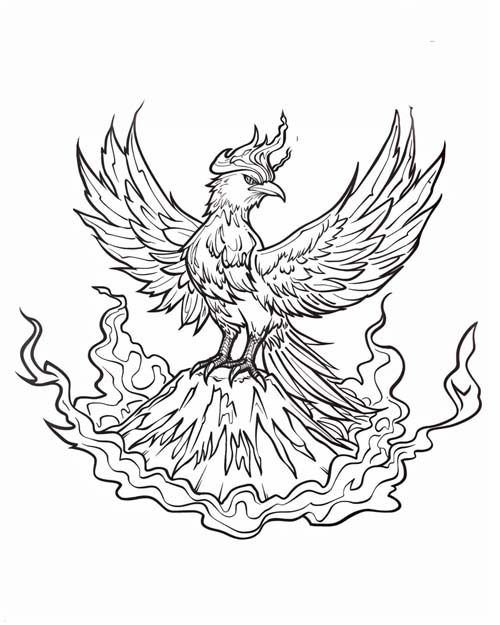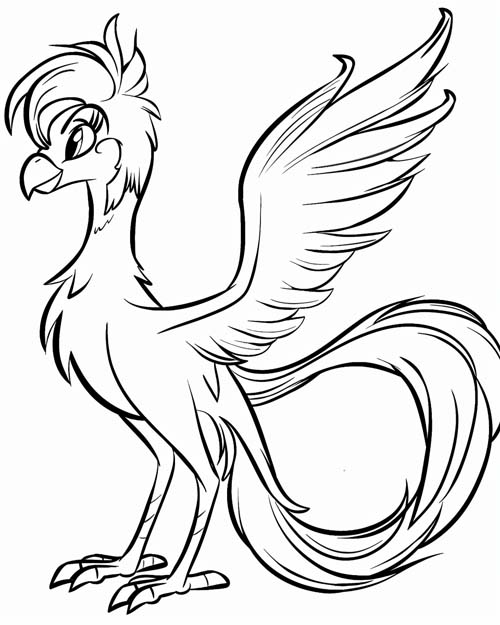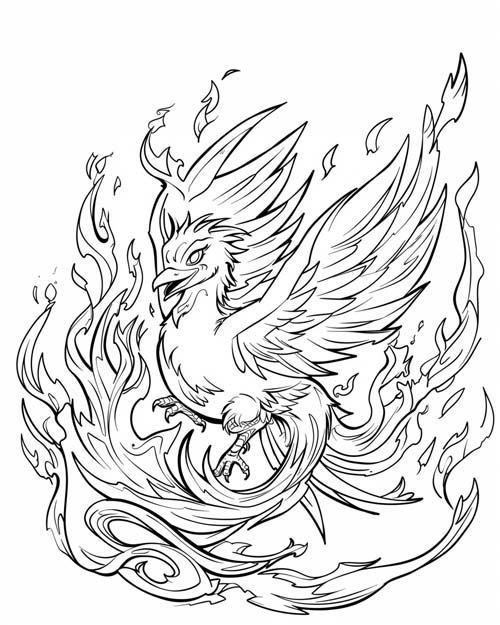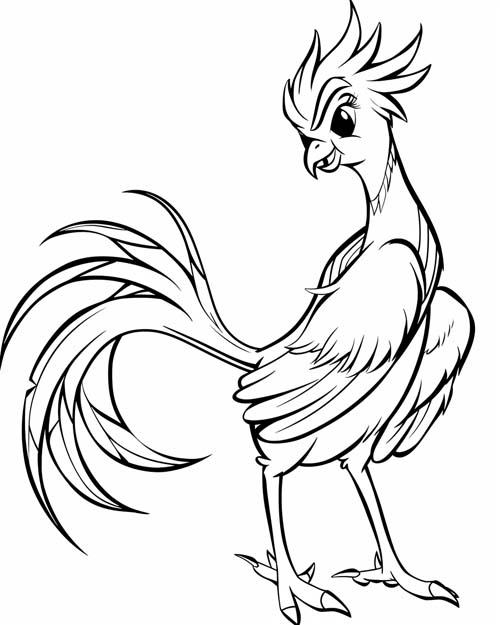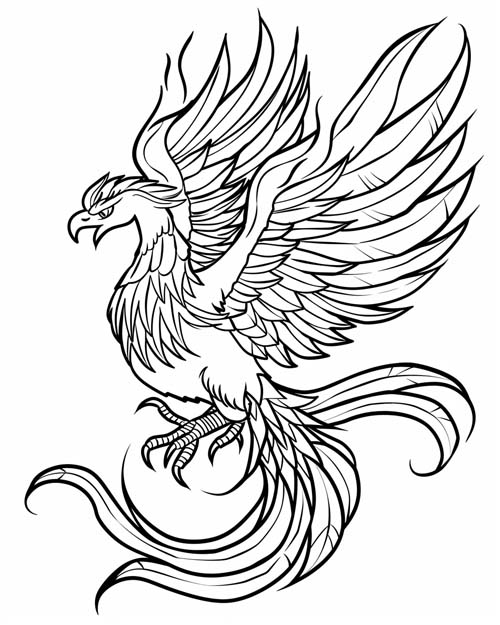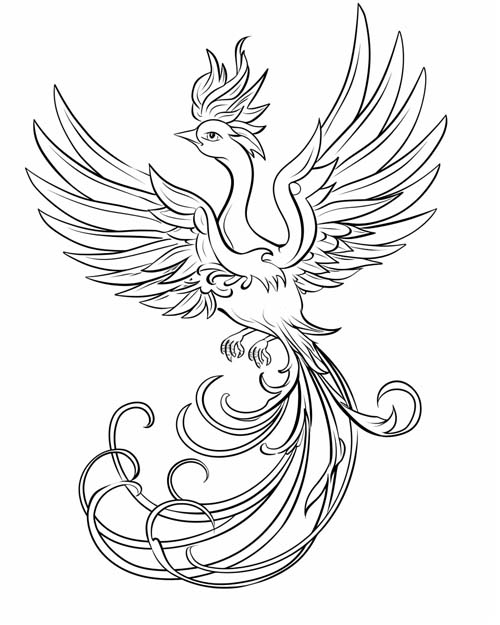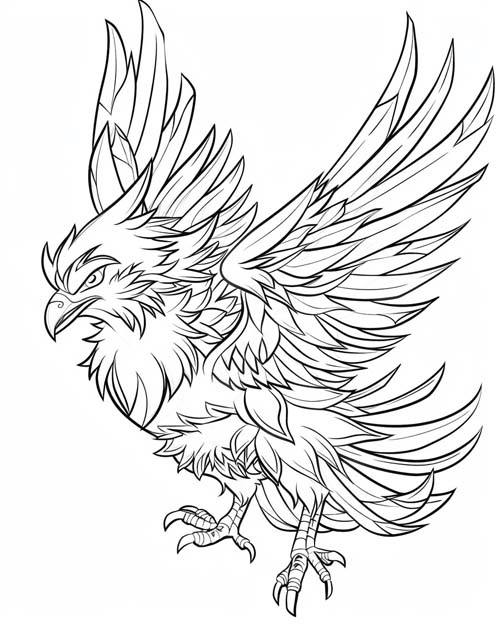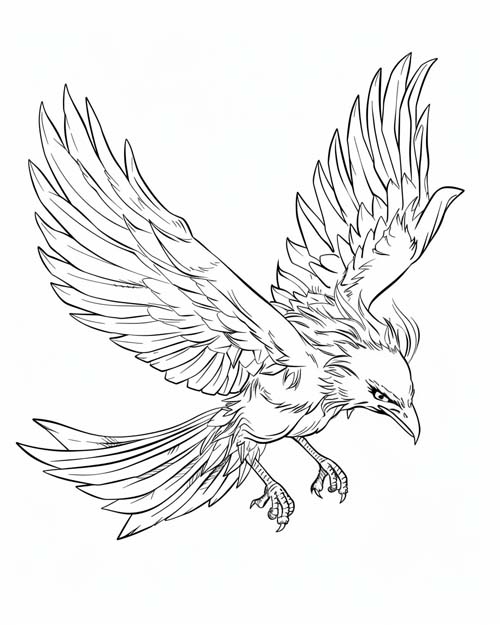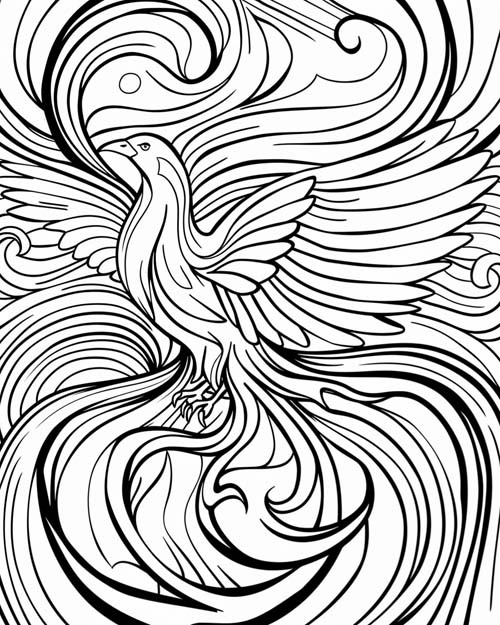Printable Coloring Pages
The Firebird from European Folklore Coloring Pages
In Slavic and Eastern European folklore, the Firebird shines as one of the most enchanting figures. Its glowing feathers, radiant as living flames, link it to themes of beauty, danger, and destiny. The Firebird’s presence in a story often marks the beginning of a great quest: heroes are sent to capture it, and in doing so, discover trials, allies, and lessons that shape their journeys. Both wondrous and perilous, the Firebird bridges the everyday world with the magical, showing how European folklore transformed light, fire, and color into symbols of challenge and transformation.
A Folktale of the Firebird:
Long ago, in a distant kingdom, a tsar owned an orchard filled with golden apples. Each morning he walked among the trees, proud of their ripening fruit. But one night, a strange glow lit the garden. By dawn, half the apples were gone, and at the center of the orchard lay a single brilliant feather, burning like flame yet cool to the touch. The tsar knew at once: the Firebird had come.
Furious at the theft, the tsar commanded his three sons to capture the thief. The eldest set out first. He hid near the orchard, but when the Firebird came, its light blinded him, and it flew away. The second son tried next, but he fell asleep beneath the trees, and again the Firebird escaped. At last the youngest, often overlooked and considered foolish, took his turn. He kept his eyes open through the night, and when the Firebird came, he caught a feather in his hand. But the great bird spread its wings, brighter than dawn, and vanished into the sky.
The tsar was not satisfied. He demanded the whole Firebird, not just a feather. So the youngest son set out on a quest. Along the way he met a gray wolf, who, instead of devouring him, became his guide. The wolf carried him across forests and rivers, helped him through trials, and warned him of dangers. With the wolf’s aid, the young prince reached the Firebird’s golden cage and nearly claimed his prize until his curiosity overcame caution, and alarms were raised. From there, the quest became longer and harder, leading him through kingdoms, to other wonders, and into conflicts with his own brothers.
In the end, the Firebird was captured only through courage, patience, and the guidance of loyal companions. Its blazing feathers lit the halls of the tsar’s palace, but its meaning was greater than treasure. The Firebird revealed that true worth lay not in possession, but in the trials endured, the friends gained, and the wisdom found along the journey.
Thus the tales of the Firebird remind us: beauty can inspire, but it also tests the heart. Those who chase its light must be ready to face both peril and transformation.
